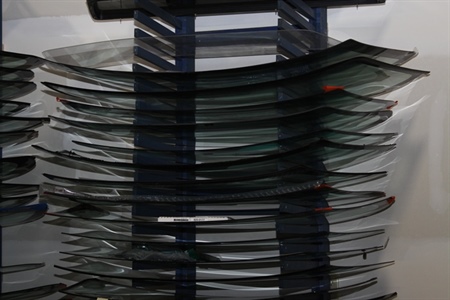Are There Environmental Benefits to Replacing Auto Glass?

Picture this: you’re cruising through St. Cloud when a small chip appears in your windshield. Beyond the immediate safety concerns, taking that step to auto glass replacement can yield surprising environmental advantages.
From conserving natural resources to cutting down on landfill waste, replacing damaged glass isn’t just about clarity of vision—it’s about reducing your vehicle’s ecological footprint and supporting a circular economy.
In the sections that follow, we’ll tackle key questions about sustainability and auto glass. By exploring these topics, readers will gain a deeper understanding of how thoughtful choices around auto glass can help protect the planet.
Using Recycled Glass in Windshield Replacements
Recycled glass cullet can be directly incorporated into the melt used to form automotive windshields, thereby reducing the need for virgin silica and soda ash.
By substituting up to 30–40 percent of the raw batch with clean, color-sorted cullet, manufacturers lower furnace temperatures and energy consumption while maintaining optical clarity and strength.
To meet safety standards, recycled cullet must be thoroughly cleaned and free of contaminants such as metals, PVB interlayer fragments, and adhesives.
The cullet is crushed, washed, and graded by particle size before being blended into the glass melt. Modern float-glass lines are calibrated to accommodate this cullet blend without altering the lamination process, which bonds two glass plies with a PVB interlayer.
In practical windshield repair scenarios, technicians often order replacement windshields made with recycled content to maximize environmental benefits.
Choosing auto glass replacement products containing cullet not only diverts material from landfills but also cuts CO₂ emissions by up to 20 percent compared to fully virgin‐glass production.
Proper Disposal Processes for Damaged Auto Glass
Industry leaders like Glasswerks, based in St. Cloud, follow strict protocols under EPA and state regulations to ensure damaged auto glass is handled responsibly.
First, the laminated assembly is separated: the PVB interlayer is peeled away, then the glass fragments are collected in designated containers. This segregation prevents adhesive contamination of recyclable cullet.
Once separated, clean glass fragments are transported to a recycling facility where they undergo further crushing and screening.
The PVB interlayer is either processed through specialized recyclers—where it’s turned into flooring materials or adhesives—or, if recycling is unavailable, managed as an industrial fuel in permitted pyrolysis units.
Any glass that cannot be sorted or recycled—often due to severe contamination—is disposed of as non‐hazardous construction debris, in compliance with RCRA Subtitle D.
These rigorous disposal steps ensure that over 90 percent of auto glass waste is recycled or repurposed, keeping it out of municipal landfills.
Eco-Friendly Options for Auto Glass Replacement
Beyond recycled-content windshields, low‐VOC urethane adhesives offer an eco-friendly alternative to traditional adhesive compounds.
These formulations cure at lower temperatures and emit fewer volatile organic compounds, improving air quality in repair shops and reducing installer exposure.
Remanufactured windshields are another sustainable choice. They undergo a controlled reglassing process where damaged or outdated windshields are stripped, inspected, and refitted with new inner and outer glass plies.
This reuse of the original frame conserves materials and energy compared to full new builds.
Technicians can also specify solar‐reflective or tinted glass options that improve vehicle energy efficiency by reducing cabin heat gain.
While primarily for comfort, these coatings extend windshield life by mitigating thermal stress, indirectly reducing the frequency of replacements and associated environmental impact.
How Environmentally Conscious Repairs Reduce Auto Glass Waste
Chip repair—injecting polymer resin into minor cracks—preserves up to 95 percent of the original windshield, eliminating the need for a full replacement.
Each successful repair saves approximately 5 pounds of glass and adhesive from entering the waste stream.
Consolidated repair scheduling further cuts carbon emissions: mobile technicians can serve multiple nearby vehicles in a single trip, reducing fuel use and site idling time.
Advanced digital inspection tools enable precise mapping of damage, ensuring only qualified repairs are performed and minimizing unnecessary disposal.
By training technicians to favor repairs over replacements when safety standards are met, shops can lower their glass waste by up to 60 percent annually. This practice aligns with circular‐economy principles, closing the loop on material use.
Partner with Glasswerks for Sustainable Auto Glass Solutions
Glasswerks offers expert guidance in selecting recycled-content windshields, low-VOC adhesives, and mobile repair options that minimize environmental impact.
With over a decade of service in St. Cloud, MN, our technicians adhere to rigorous disposal protocols, PVB recycling partnerships, and advanced repair methods to cut waste and energy use.
Whether you need certified cullet-blend replacements, precision chip repairs, or insights on green product options, our team delivers technical excellence and eco-focused practices. Reach out today to discuss how our capabilities—from ADAS recalibration to fully renewable laminate systems—can meet your sustainability goals.
Call us at 320-203-7777. Ready to make your next auto glass service environmentally responsible? Contact us to get started.